This post has been republished via RSS; it originally appeared at: Channel 9.
For the next couple months we're going to revisit Build 2017, each post focusing on different aspects and technologies presented. Not every session will be listed, just a select set, hopefully enough to wet your appetite. All the on-demand sessions can be found and the Channel 9 Build event site.
This post highlights a select set of sessions from the many (134!) pre-recorded sessions.
Build Revisited Table Of Contents
- Pre-Recorded Sessions (This Post)
- .Net, XAML, Visual Studio
- Azure
- Windows 10
- AI/ML
- Bots
- Office
- ALM & DevOps
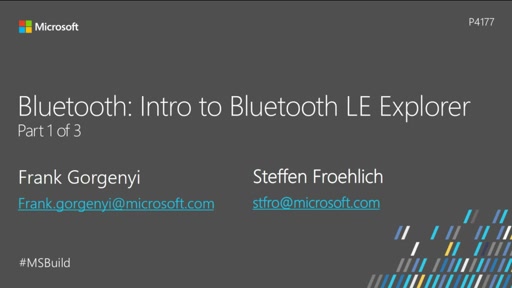
- Bluetooth: Intro to Bluetooth LE Explorer - Part 1 of 3
Learn about our new Bluetooth UWP sample app aimed to help you code and debug your Bluetooth apps. Quickly view the Gatt Services and characteristics on your peripheral or create a virtual peripheral in seconds. (Final)
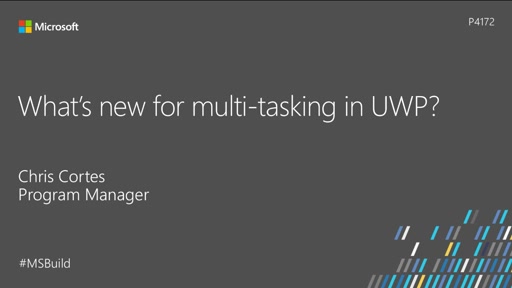
- What’s new for multi-tasking in UWP?
This session provides an overview of the methods for running in the background on a scenario-by-scenario basis. Scenarios include Media Playback, Media Capture, Location Tracking, Bluetooth, Media Processing and others running in the background. We also cover how enterprises can enable and control background activity via MDM/Group Policy for the apps used in their enterprise.
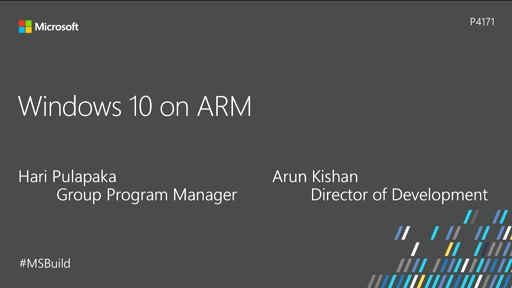
- Windows 10 on ARM
For the first time ever, our customers will be able to experience the Windows they know with all the apps, and peripherals they require, on a mobile, power efficient, always-connected cellular PC. Watch to learn more and see Windows PCs running on Qualcomm Snapdragon processors.
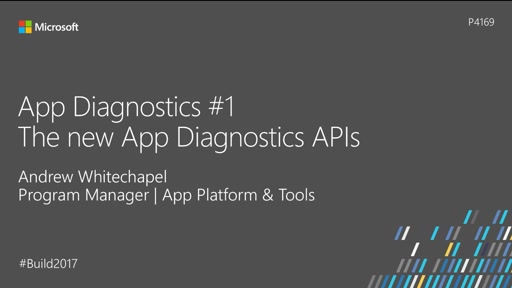
- App Diagnostics #1: The new App Diagnostics APIs
In this session, we examine the whole surface of the new app diagnostic APIs, how the API hierarchy models the kernel and platform runtime functionality, and what’s here in the Creators Update and coming in the next release. We also walk through building a UWP version of Task Manager.
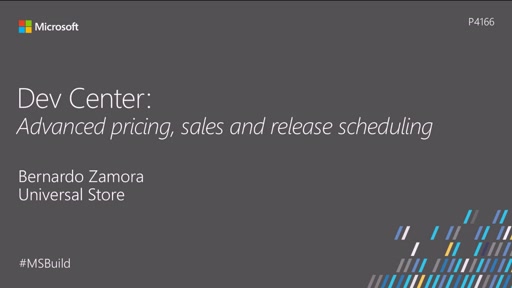
- Dev Center: Advanced pricing, sales and release scheduling
Learn about the exciting new features in Dev Center that provide you the ability to maximize user acquisition app revenue through conditional targeting of deals and discounts to a subset of users. We also explore how Dev Center puts you in precise control of your product’s release, pricing, and go-live date to align with your region specific marketing activities.

- Enable natural pen interaction by using Ink Analysis to better understand users’ ink
The Creator’s Update brings new InkAnalysis APIs, allowing the user to ink naturally and enabling the system to recognize handwriting, shapes, document structure, lists, and more. We walk through how to take advantage of these APIs and share code samples.
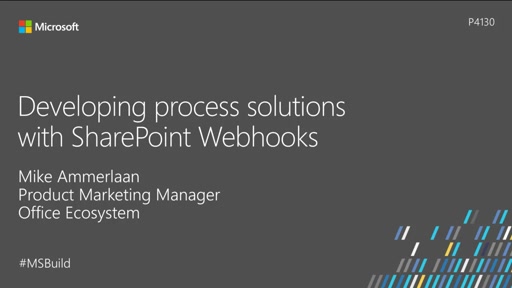
- Developing process solutions with SharePoint Webhooks
Find out more about what's new with SharePoint Webhooks, and how you can build full business process solutions that integrate Microsoft SharePoint with your broader systems.
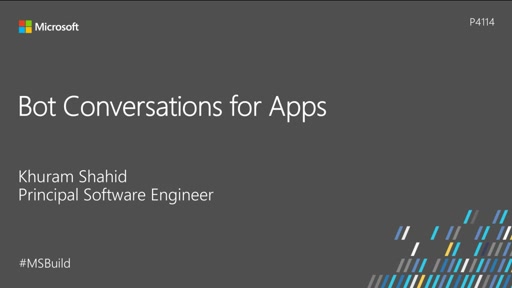
- Bot conversations for apps
The same bot that you create as a Cortana skill or a Skype bot can be accessed from applications. Learn how to access the bot’s intelligence in the cloud with voice, text, and UI input and create rich a conversation experience for apps.
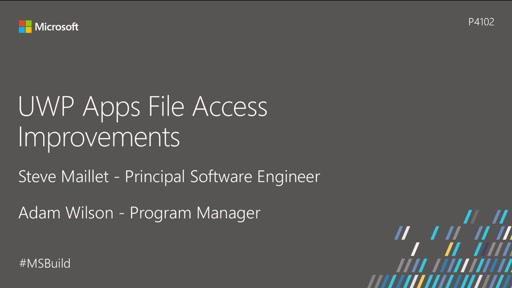
- UWP Apps file access improvements
Windows makes it easy to bring existing code into UWP apps, and we see that virtually every app will access the file system at some point. This session covers how to open and enumerate files using familiar APIs, including strategies for optimizing some of your existing file access code.
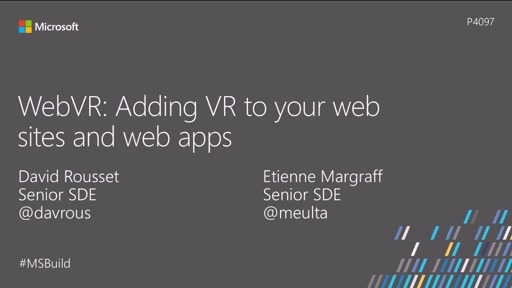
- WebVR: Adding VR to your websites and web apps
WebVR has now shipped with browsers including Microsoft Edge, Chrome, and Firefox, enabling you to build immersive experience directly in the browser. We show you how to build a WebGL VR experience working in the HTC Vive, Oculus Rift, Mobile Cardboard and the new Windows Mixed Reality headsets. Coupled with Progressive Web App (PWA) principles, those web apps could really compete with native apps.
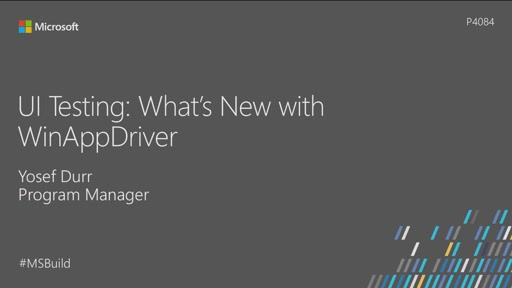
- UI Testing: What's new with WinAppDriver
UI Testing: What's New with WinAppDriver
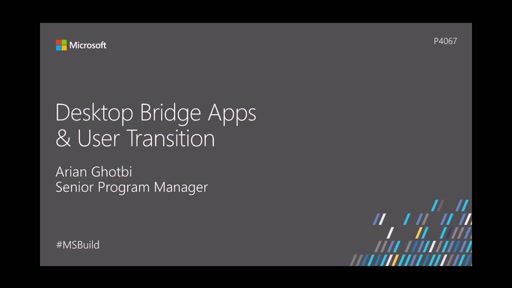
- Desktop Bridge Apps & User Transition
The Windows 10 Creators Update will enable desktop app developers to provide a smooth user transition from the previous desktop app to the store version. This topic includes transition of the user’s taskbar pin(s), start menu tile(s), file type associations, and protocol handlers. In addition, we cover best practices to migrate user data and uninstall the previous desktop app. Users will be encouraged to download the store version of their desktop apps. If the user already has the previous desktop version of the app, the transition experience should be as seamless as possible.
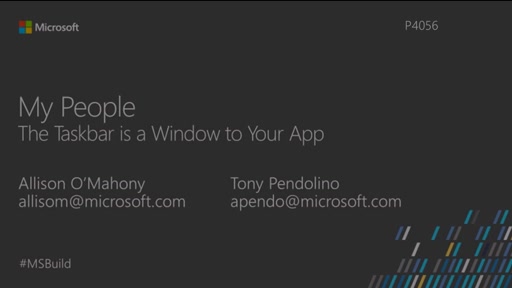
- My People: the Taskbar is a Window to your app
In Windows 10, UWP app developers can take advantage of new experiences that allow contacts provided by their apps to be elevated in Windows. Developers can build apps that makes it possible for the user to pin their favorite people to the taskbar, enabling quick and easy communication and sharing. Also, with the Windows 10 update, developers can take advantage of a direct line of sharing with people via the new “people first” experience in the share picker. This session covers the experiences developers can now build using the My People framework that will drive increased acquisition and engagement with your app in Windows 10.
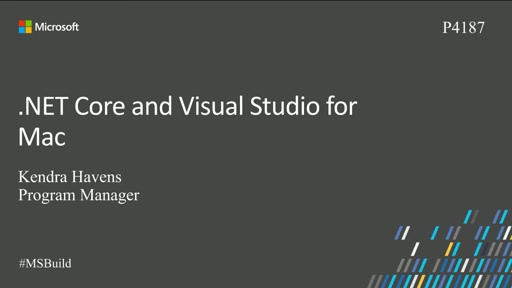
- .NET Core and Visual Studio for Mac
Visual Studio for Mac enables web and cloud developers on macOS to build applications using .NET Core. This video shows how to get started building web applications in Visual Studio for Mac and how to publish them to Microsoft Azure. To get started, download Visual Studio for Mac today on visualstudio.com.

- Build a CI/CD pipeline from Microsoft Azure Portal
In this video Donovan Brown shows you how to use the new Continuous Delivery feature of the Azure Portal to build a complete CI/CD pipeline in Visual Studio Team Service and deploy to Azure.
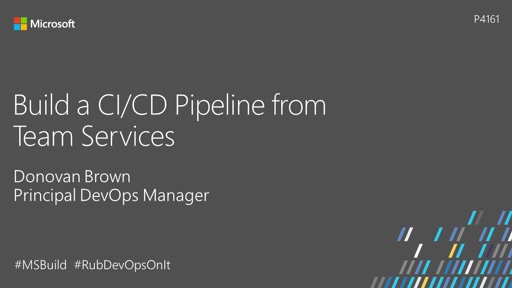
- Build a CI/CD pipeline from Visual Studio Team Services
In this video Donovan Brown shows you how to use Team Services to build a complete CI/CD pipeline and deploy to Docker.
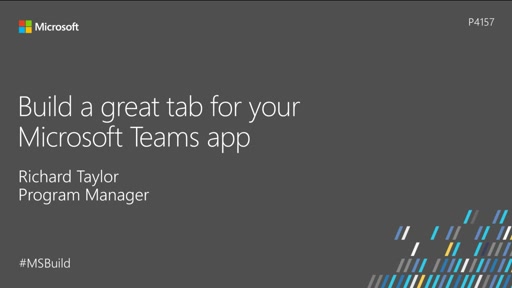
- Build a great tab for your Microsoft Teams app
Learn how to build a rich tab for your Microsoft Teams app. Tabs give team members access to your service on a dedicated canvas connected to a channel. This lets them work directly with the tools and data you provide in a relevant context, and have collaborative experiences around it. ...
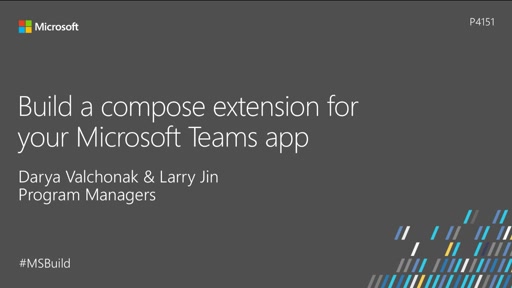
- Build a compose extension for your Microsoft Teams app
Learn how to build a compose extension for your Microsoft Teams app. Compose extensions let users query an app directly in Teams and put the results right in the compose box as they write a message. Users won’t have to switch between multiple windows or copy and paste to collaborate using data from a service directly in a Teams conversation. With the Microsoft Teams Developer Platform, you can make your service available to users within Teams in contexts that make sense. ...
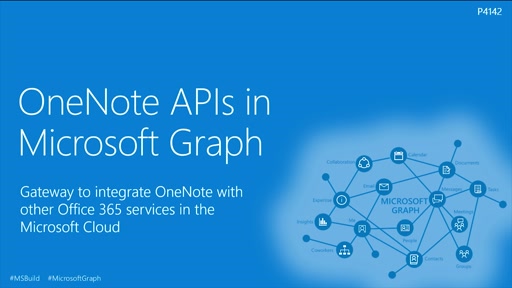
- OneNote APIs in Microsoft Graph
Learn about recent updates in Microsoft Graph for accessing Microsoft OneNote notebooks, pages, and more for millions of commercial and consumer users.
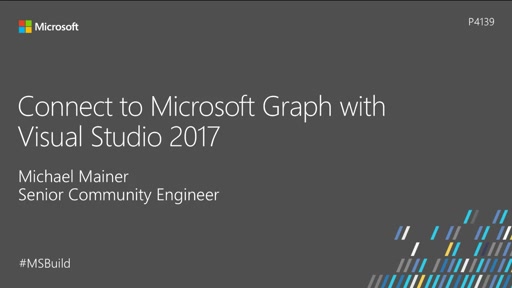
- Connect to Microsoft Graph with Visual Studio 2017
Lean how to use the Microsoft Graph API SDK for .NET to build your next integration with Office 365, including an updated Visual Studio experience.
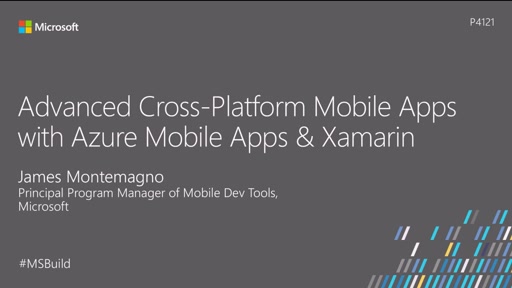
- Advanced cross-platform mobile apps with Azure Mobile Apps and Xamarin
Creating connected mobile applications often requires some form of backend infrastructure. In this session, you'll learn how to reuse your existing .NET skills to quickly build web services into your Xamarin apps, leveraging the power of Azure App Service. See how simple it is to integrate the Azure App Service Mobile Apps SDK to integrate online/offline data synchronization, file storage, push notifications, and a lot more in just a few minutes. Whether you're a new mobile developer or an experienced enterprise team lead, Azure App Service and Xamarin give you everything you need to build better apps.
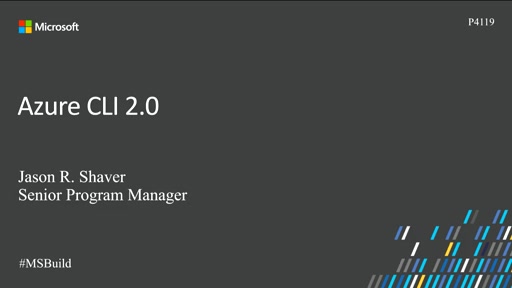
- Azure CLI 2.0
Learn about the next generation of Azure CLI – optimized to support bash and other command line environments natively and providing a powerful but simple set of commands for administering Azure resources.
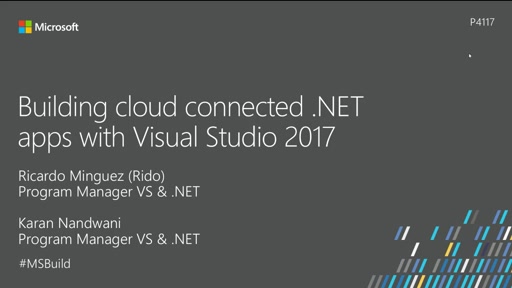
- Building cloud connected .NET apps with Visual Studio 2017
You've seen it time and time again—the true power of the .NET is being able to write applications that can run on various platforms. In this session we look at this in action. We look at an end-to-end solution that leverages UWP applications targeting IoT and desktop, all powered by an Azure backend.
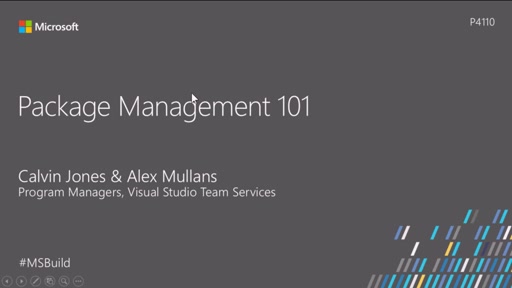
- Package management 101
You make use of components more and more in software development with NPM, Maven and NuGet. Come learn how Visual Studio Team Services can help you manage your teams packages.
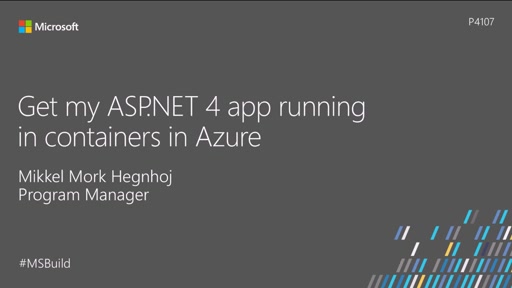
- Get my ASP.NET 4 app running in containers in Azure
Containers, containers, containers – I know I need to get going, but what can they do for my "old" ASP.NET MVC 4 application? And how can that help me get on a path to modern DevOps, cloud and easy maintenance?
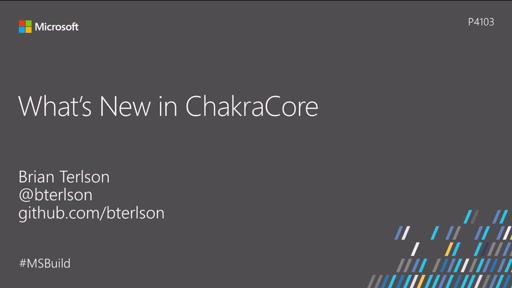
- What's new in ChakraCore
In this session we cover the updates to ChakraCore in the last year and lay out the road ahead. We talk about the progress we've made around performance, language support, emerging technologies like WebAssembly and Time Travel debugging. We also talk about how Chakra is now available across multiple OS platforms and the work we've been doing with the Node.js core project to help solve some of the key problems with Node.js like providing a stable Node API for native module developers.
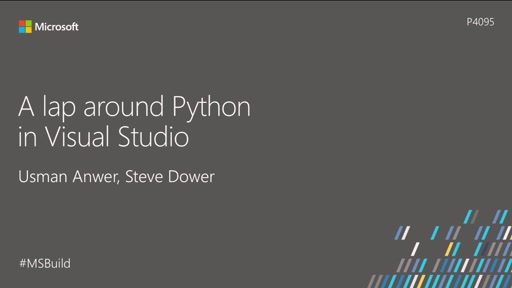
- A lap around Python tools in Visual Studio
Learn about the Data Science workload in Visual Studio and how it can help developers install the latest and greatest Python tools and distributions for Windows. We look at using these tools to solve machine learning problems within minutes, debug Python code running on a remote VM, and some nifty new REPL features. We demonstrate how the Cookiecutter Explorer can help developers get started with Microsoft Azure faster, and how it is easier than ever to deploy web apps to Azure App Service from the comfort of Visual Studio.
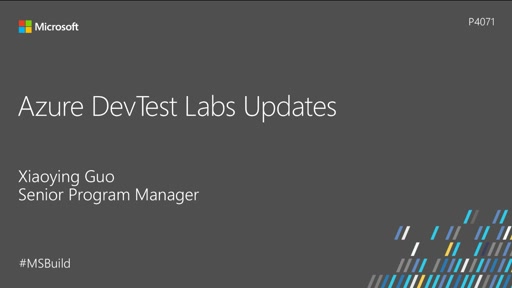
- Azure DevTest Labs updates
Azure DevTest Labs is an Azure service that enables you to quickly create environments in Microsoft Azure while minimizing waste and controlling cost. During the past year, a lot of new capabilities were shipped to better support Dev/Test and other scenarios (e.g. education). In this session, we cover the latest improvements, including more functionalities that offer a better developer cloud workstation experience, testing your apps using ARM templates that can be deeply integrated with your release pipeline, and how it helps in the education segment.
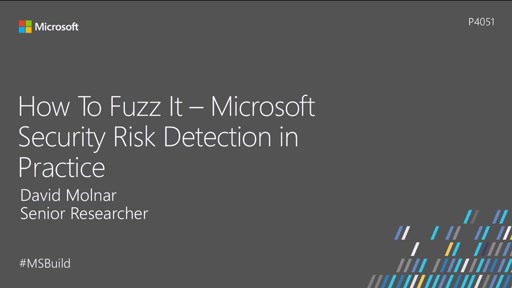
- How To Fuzz It – Microsoft Security Risk Detection in Practice
You will learn how you can use Microsoft Security Risk Detection to find serious issues in your code, then how you can take action to manage the risk. You will see a sample library and application that hide problems, then learn how you can find these problems and reproduce them. After the session, you can download the code to study and understand the kinds of issues that Security Risk Detection helps you find. You will also learn how the broader Microsoft platform helps you manage risks from these issues.
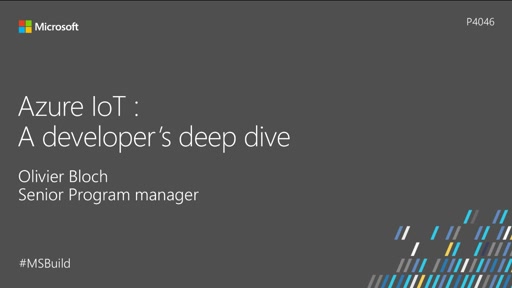
- Azure IoT: A Developers' deep dive
From connecting devices to Microsoft Azure to deploying, configuring, and monitoring an IoT Solution, we walk through what's available for developers in Azure IoT platform, SDKs, and tools. Whether you are a hardcore C device developer, a C# or Java expert, a Node.js aficionado, a data and analytics guru, or if you just wonder what IoT is made of and has to offer, this demo-packed session is for you.
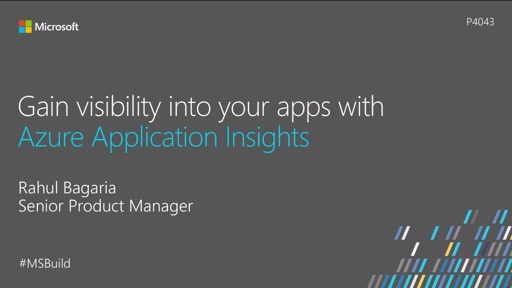
- Gain visibility into your apps with Azure Application Insights
In the world of constantly evolving apps and continuous deployments, knowing what is happening with your app and users can make or break your customer experience. You want to proactively detect issues as they occur and fix them, before they start affecting your users. Application Insights, an intelligent Application Performance Monitoring service, provides instant analytics over your application logs and telemetry. It includes fast, easy, and non-intrusive analytics tools to interactively diagnose problems and answer challenging questions. It also integrates seamlessly with your existing DevOps workflows....
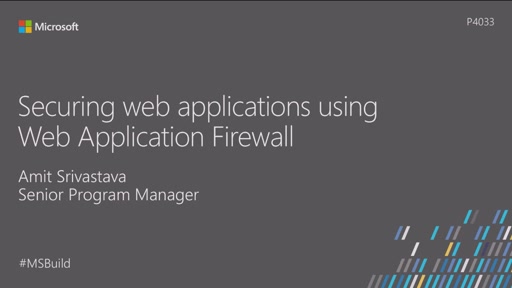
- Securing web applications using Web Application Firewall
Application Gateway is a layer 7 load balancer providing Application Delivery Controller as a service in Microsoft Azure. It provides various advanced load balancing choices like SSL termination, session affinity, URL path-based routing and multi-site hosting. Application Gateway also offers web application firewall (WAF) capability to help protect your applications from common web exploits as identified by OWASP (Open Web Application Security Project) top 10 web vulnerabilities. ...
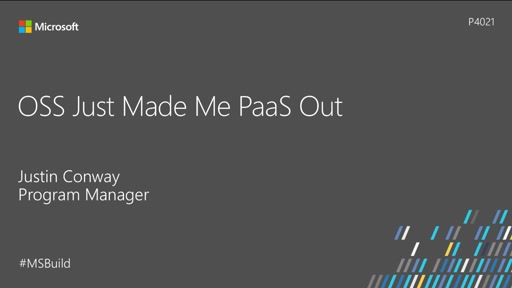
- OSS just made me PaaS out
Messaging is a key component of any cloud application. Building on the success of open protocols such as AMQP we have continued the open source approach with our clients as well. Find out how OSS makes an impact on PaaS and gives customers a stake in how the service goes to market.
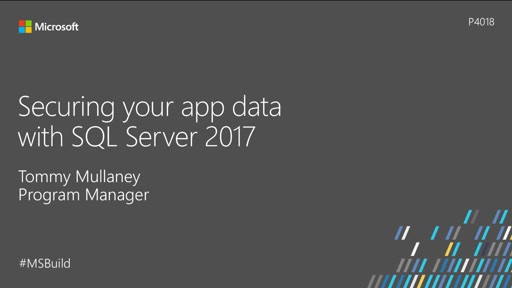
- Securing your app data with Microsoft SQL Server 2017
Join us for an overview of strategy and best practices to build secure applications using SQL Server. SQL Server offers a versatile toolset of security capabilities, which enable you to protect sensitive data and meet stringent compliance requirements. You’ll leave with an understanding of how these capabilities fit together to protect your application as a whole, including the new security enhancements available in the latest version of SQL Server.
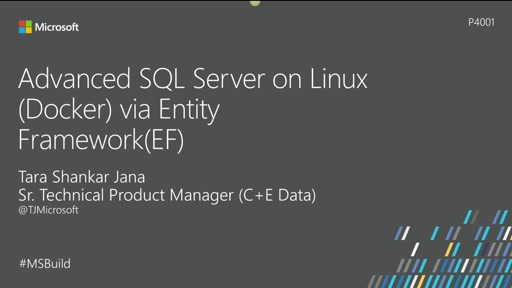
- Advanced SQL Server on Linux (Docker) via Entity Framework (EF)
It’s SQL Server as you already know it today, but it’s now native to Linux. It works with your data, your favorite tools, application frameworks (Entity Framework) and programming languages. In this session, we pull the code for an application running in cloud to a Linux-based machine. We test and enhance the application for performance (using EF, in-memory) and security against SQL vNext (Linux). Then we re-deploy the changes using DevOps to Azure with just a flip of d, show how the application works across platforms, on-premises, and in the cloud. Best part, all of it will be done in ten minutes.

